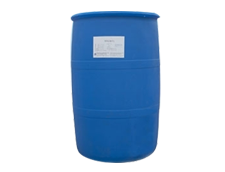If the concentration of surfactant compound is slightly higher than its CMC, its levelness is better. This is because the solubilization of surfactants plays a decisive role in the levelness, while the cmc value of the complex has no obvious effect on the binding force between dyes and surfactants.

Therefore, the smaller the cmc value of the complex, the smaller the concentration required to form micelles, and the solubilization ability of disperse dyes is increased, so as to improve the levelness. When the concentration is slightly greater than the cmc value, there is a certain amount of anionic surfactant in the solution, which increases the solubilization of the dye, while maintaining enough non-ionic surfactants and having a certain affinity for the dye, which can improve its levelness.
After compounding different kinds of surfactants, there will be obvious changes in their surface properties and physicochemical properties, as well as the application properties of surfactants. Therefore, in the application process, when selecting surfactants according to different needs, we should first understand the relationship between the surface characteristics and application properties of surfactants, so as to provide a basis for the correct selection of compounds.
Secondly, the wetting, dispersion and leveling effects of different surfactant mixtures on different application objects are different. Therefore, the compound has a certain specificity to the substances used. The composition and proportion of the compound should be adjusted according to the category of substances used, so as to obtain better application effect. In addition, the additives in the compounding process, especially some electrolytes, will have a great impact on its application effect. Therefore, the introduction of electrolytes should be strictly controlled, otherwise it will bring some adverse effects.
The levelness of new synthetic polyester fabric depends on the dye uptake rate of the dye to the fiber and the dye transfer rate at high temperature. Therefore, leveler is often used to improve either effect. As a high-temperature dispersion leveling agent of disperse dyes, it is not only necessary to use a kind of high-temperature dispersion leveling agent that can have a certain binding force with dyes and form stable micelles at high temperature, which has excellent dispersibility and solubilization. At the same time, surfactants that have affinity with fibers or dyes should be used to slow down the adsorption rate of dyes, and form micelles with dyes on the surface of fibers to improve the solubility of dyes, so that dyes can be evenly dispersed in the fabric to achieve the purpose of level dyeing. At present, most of the high-temperature disperse leveling agents used are composed of anionic and non-ionic surfactants in a certain proportion.